#raptorial forelegs
Text

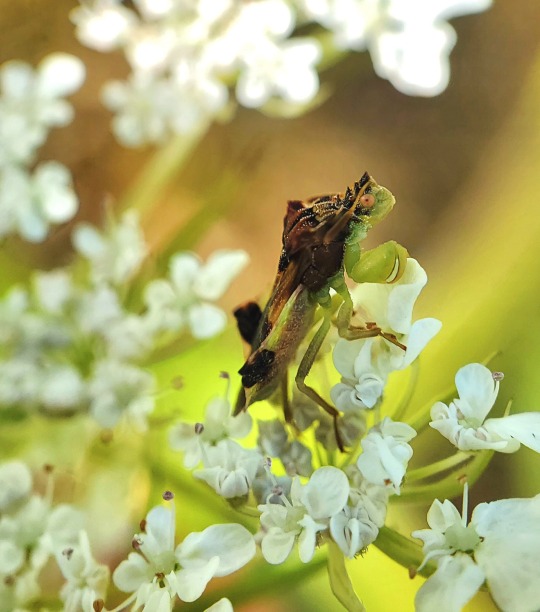
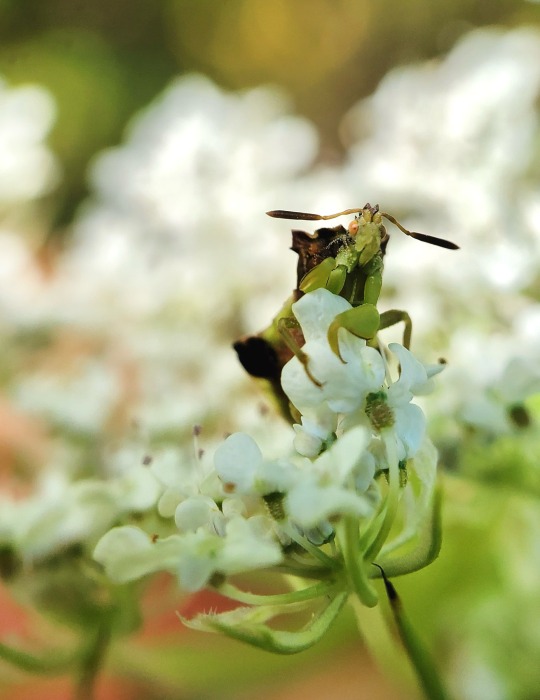
Ambush bug (a type of assassin bug) in the genus Phymata. These predatory insects hide on or under flowers, waiting to attack unsuspecting pollinators.
#ambush bug#assassin bug#bug#hemiptera#raptorial forelegs#predator#ambush#assassin#nature#bugs#nature photography#biodiversity#animals#arthropods#inaturalist#bugblr#insect appreciation#entomology#macro photography#flower#garden#cute bugs
75 notes
·
View notes
Text

Pretend to be what you will, but under the light of the full moon, there's no more room for playing at civility (you are a monster, and you cannot control your nature)
#our art#bug fables#finished#watercolor#vi#wereweevil vi#werecreature#we use a specific paint for the eyes and claws and such here and it doesn't show in a still picture but it shimmers blue-green in the light#anyways. FUCKED UP BEAST!!!#this is for a cool & fun fic we've had in the works for um. uhh. (pause as we look at the date)#...actually don't worry about it we'll finish it eventually#wereweevil form draws inspiration from both mantids and wild boars!#we're going with the theory that weevils and primal weevils are NOT the same species#but rather different species entirely that tend to cohabitate and have some aesthetic similarities because of it#golden path weevils are a VERY altered form of weevils that have adapted very far from their original form over time#and primal weevils are a member of superorder dictyoptera split off from an ancestor like...#googling it suggests the common name we're familiar with is not actually common since it didnt bring up results but the wood mantis#but honestly it could either be a split from one of the Flat Fuck mantids or a roach w those raptorial forelegs#while golden path weevils have evolved specifically to eat seedlings and are most likely a split of acorn weevil#primal weevils are Something Else Entirely and have the “everything and the kitchen sink” diet of a roach#though they do prefer plumplings and have over time developed teeth specifically for cracking them open and eating them#their mutualistic relationship with golden path weevils stems from this: cracking open otherwise difficult plumpling prey for GP weevils#and receiving the benefits of a pack of allies for hunting more difficult prey in return#primal weevils are most likely an awakened species from what we've seen of canon but we doubt roaches would acknowledge them#as related much less potentially another form of roach#seeing as the roaches in game seem to be purely based on a handful of “pest” species and not the absolute wealth of roach species out there#that have unique adaptations or mimicry or anything of the like#we don't think they would take well to mimic roaches or anything of the like. also ties in to our hcs for levi.#if youre not one of the core species of roach then you dont get considered a “roach”. there are probably plenty of mimic roaches out there#just not acknowledged as Roaches because the Roaches bugarians are familiar with were a single culture with only a handful of species
19 notes
·
View notes
Text
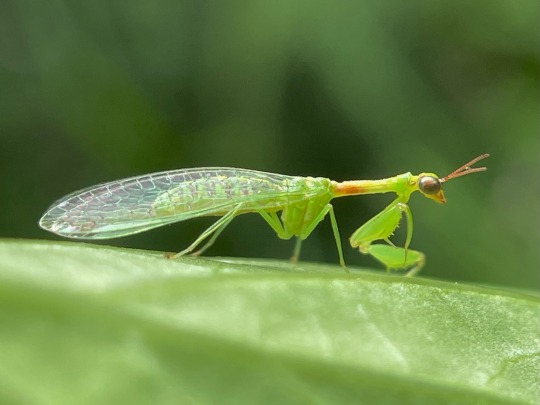
I found an insect last week I’ve wanted to see for as long as I’ve known they existed: a mantisfly! this one is Zeugomantispa minuta, the only species commonly observed where I live.
mantisflies (family Mantispidae) are named for their resemblance to mantises (order Mantodea) but themselves belong to the order Neuroptera, being related to lacewings and antlions. as adults, they closely resemble mantises, and live a similar lifestyle capturing prey with raptorial forelegs.
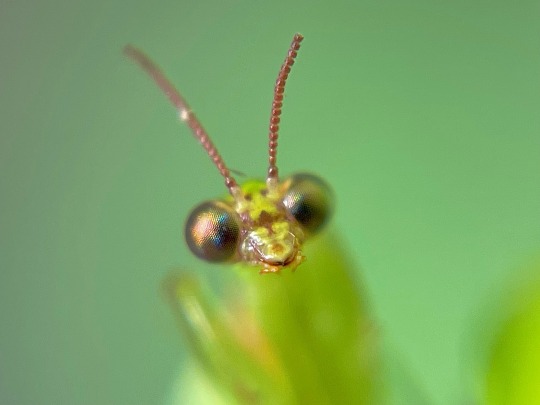

compared to this Chinese mantis (Tenodera sinensis), there are a few anatomical differences you might notice, but the biggest difference between the two is definitely their reproductive strategy.
mantises lay egg cases and develop from nymphs that resemble adults. being neuropterans, mantispid juvenile are larvae. but mantispid larvae, unlike their lacewing and antlion relatives, aren’t predators, they’re parasites! Zeugomantispa follow the strategy of starting as a leggy, highly active larva that on hatching immediately seeks out a spider egg sac to burrow into, growing into a plump grub quite different from its original appearance after feeding on the eggs. other mantispid larvae attach themselves to the adult spiders, and wait for their host to produce a sac; still others parasitize beetle or wasp larvae.
here’s a great photo of a mass of Z. minuta eggs hatching into their sac-seeking first instars!
1K notes
·
View notes
Text
Climaciella brunnea! I don't come across these very often, so seeing this one was quite something! Such a weird and cute little insect. It is neither a fly, or a wasp, or a mantis. This wasp mimic Mantidfly is in the order Neuroptera, family Mantispidae. Basically just a fancy lacewing with raptorial forelegs.
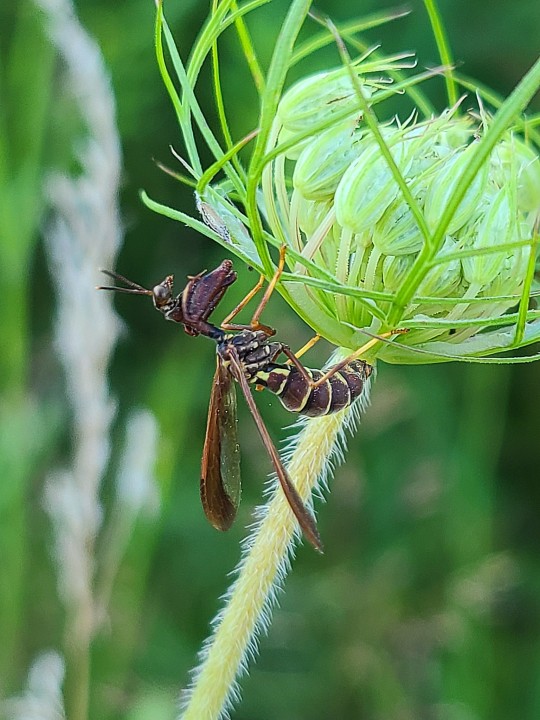
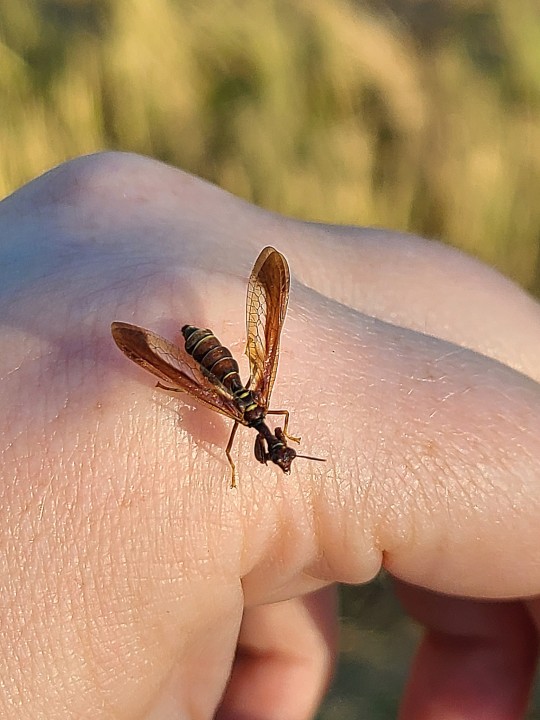
#Climaciellabrunnea#Mantidfly#WaspMimic#Neuroptera#Mantispidae#Insect#Entomology#Greenbelt#Daucus#WildCarrot#July
288 notes
·
View notes
Note
So. What if Jaime had chemoreceptors on spots his armor? I have four potential explanations/reasons.
One: the less creepy version: certain types of bugs taste with their feet, etc. Not beetles, but they do. They can land on things and identify whether or not they’re food that way. So, fingertips and or balls of his feet have the ability to taste.
Two: the raptorial version. The forearm blades/upper forelegs are raptorial. If he’s fighting/hunting, he might wanna be able to sense if this is food or not, once he sticks his blades in. So taste receptors on the blades. Possibly little pores like ampullae of lorenzini (detects electrical impulses, so might help with finding muscles to cut to incapacitate prey), or thermal pits like vipers (to help locate large veins to slice.)
Three: antenna version.
The upper forelimbs kinda look like antenna, could give them sensory function (in suit). Maybe sensitive to pressure on the tips, with chemoreceptors clustered on the tip (active investigation, like he’s poking at a thing) and trailing in a rough line down the limb towards his main body (passive investigation, like the wind blows a smell to him)
Four: scout version. The scarab is an infiltrator, part of infiltrating is collecting data, so the armor must have a whole fuck-ton of sensors on it, so the scarab can get lots of data to send to Reach. Khaj isn’t interested in the reach, but that doesn’t change what it was designed for. So lots of sensors everywhere, with taste/smell receptors clustered on the ends of limbs (feet, hands, blades)
Thank you, have a nice day!
Hey. Hi. Not to be dramatic but I’m going to marry you now. This is not a request. Put the ring on

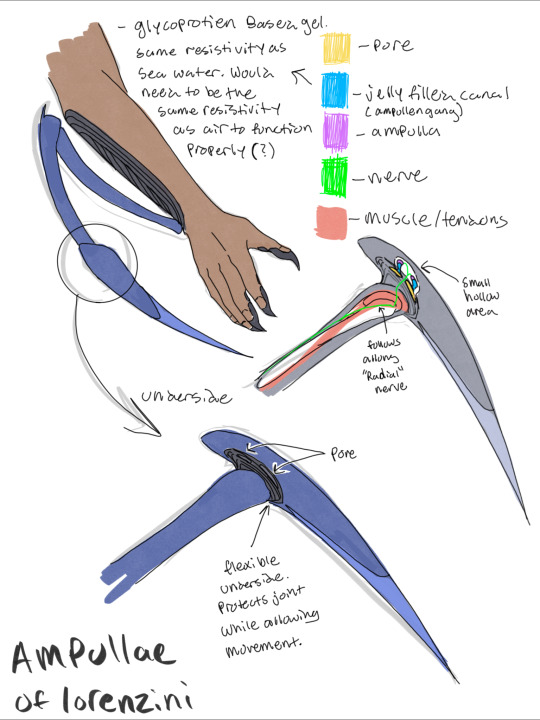
Hoooooooooly fuck I love the Ampullae of Lorenzini idea so much. I know there aren’t really insects that have them (as far as I know) but I don’t fucking care they’re SO COOL. The gel inside ampullengang might need to change because it’s meant to detect electromagnetic fields underwater but that’s like. The only real issue here.
Fuckkkk you could have so much fun with behavioral shit too. Movement might cause his mantis blades to try and lash out to attack whatever’s triggering them. In battle this could help with quick instinctive attacks that might not be possible if he was doing it consciously. BAD news is that means he has to get a grip on them real fucking quick so he doesent hurt anyone on accident. OHHHH MY GOD WHICH WOULD MAKE DUCK-TAPING THEM DOWN IN MY LAST LIL AU BLURB EVEN MORE FUN LETS FUCKING GOOOOOO.
Oh god accidentally hurting a family member. His worst fucking nightmare. Delicious. I am drinking that shit like lemonade.
Yes I added his little clawsies in the diagram you can fit SO many knives on this boy.

THERMAL!! PITS!! Holy fuck I did not know there were beetles that have these but there ARE. They’re called fire chaser beetles and they can sense fires from MILES away and holy fuck I love them. Their sensilla (sorry for spelling it wrong in the drawing lmao) are stored in the thorax and are infrared receptors. These contain liquid which expand in response to the infrared radiation, and touch a nerve, which tells the beetle where heat is coming from.
For Jaime this would be weird as FUCK. It’s more just a sense of 'HEAT WHEREMST’ than infrared vision. It is nice for telling his mom when she forgot to turn off the oven though.
#god bless this slow day at work. if I had to wait any longer to draw these I was going to implode#also I love that bottom right Jaime. he looks so bug. I’m so proud#jaime reyes#khaji da#blue beetle#my art#mantis blades au#blue beetle 2023#this ask had me in a mental frenzy for like. 5 hours. it was great#sketch#blue beetle bio diagrams#blue beetle headcannons
94 notes
·
View notes
Text
story-idea: OG!SQQ turns into a demon
I love the concept of unrepentingly evil Shen Qingqiu, we need more of that! And I have several story ideas for this, but right now one is especially interesting to me:
Humans can turn into demons when their heart demons get too strong. Well, Shen Qingqiu would make a perfect case, wouldn't he?
This could happen almost anywhere in the timeline after becoming peak lord, but how about while he's in the water prison? Binghe rips his legs off to send to Yue Qingyuan and leaves him alone. The resentment overwhelms Shen Qingqiu and he turns into a demon.
Either Binghe didn't make him drink his blood yet and he regrows his limbs. Or the transformation basically destroys his body to the point it gets rid of the blood parasites as well, then he reforms. The energies this unleashes destroy his bindings and the prison wards. He escapes. And goes straight back to the sect, only to see Yue Qingyuan hurry out to the rescue, very clearly in utter distress. Cue childhood friend kidnapping.
Well, sorta kinda kidnapping – Yue Qingyuan is startled by the changes, but follows him readily enough to wherever. And if that means fighting a guerrilla-war against Luo Binghe and Huan Hua Palace, why not?
Everyone who hears about Shen Qingqiu turning into a demon immediately assumes he turned into a huli jing (fox spirit) due to his reputation as a lecher. And this would of course also explain why Yue Qingyuan was ensnared. But that is very much not what he became.
I think it would be neat if he turned into something akin to a mantis, with mandibles and very dangerous raptorial forelegs/arms. Or a shadow demon who can sink into shadows and teleport from there into different ones. Or even better, a mixture of these two. PIDW BS mix-em-up, why the hell not!
What do you think he should turn into?
25 notes
·
View notes
Text


@myfriendscallmethey submitted: Hi hello! I found this guy a couple weeks ago in the finger lakes region of NY. I've tried to Id them myself but I can't find anything for sure. It's like a stick bug and a mantid.
I'd really appreciate you help in iding them!!
A stick bug/mantid mashup is a pretty apt description wtih those raptorial forelegs and twiggy body! The grabby hands are a good indication this is a predator, so that tells you it’s not a stick bug. This friend is actually a thread-legged bug, which is a type of assassin bug!
169 notes
·
View notes
Text
The Nioqim: An Introduction
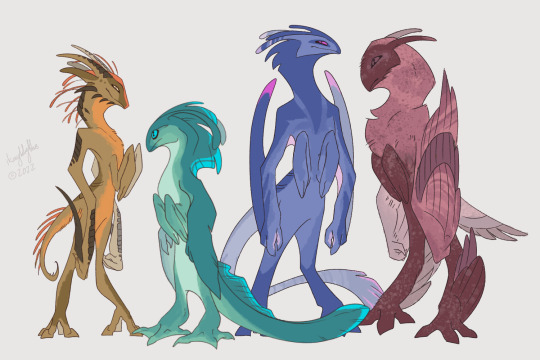
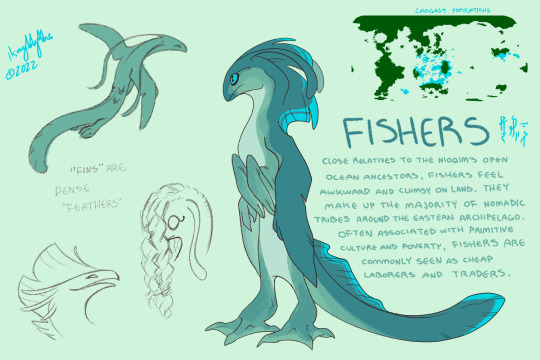


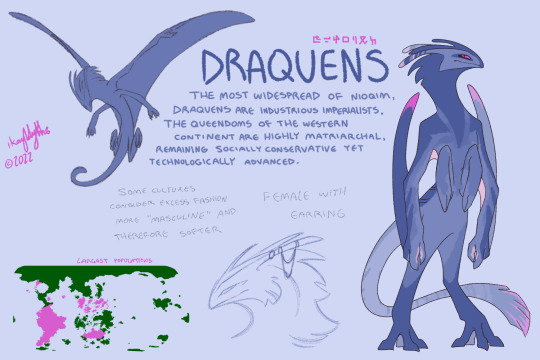
The Nioqim form a distinct clade of sapient hexapods, descended from an ancient race that went extinct before the last Ice Age, leaving only faint structures of civilization lost to time. These are the four extant species that make up the population of Nioqimo, and all of them can hybridize with each other.
All Nioqim are hexapods, with four legs and two arms, usually folded into their chest like the raptorial arms of a praying mantis. These arms have hands which lack claws unlike their legs. On the foreleg, the fourth finger is cocked backwards, supporting a wing, flipper, or keratinized spine. Nioqim are unguligrade, supporting their weight on the tips of their claws. They can easily transition from bipedal to quadrupedal movement, either walking on their forelegs like pterosaurs, or having them loosely hang at their sides like comically large arms.
Nioqim females are typically larger than males, though hybridization often blurs this trend. In addition to their main antennae, males will grow a crest of "false antennae" as they mature. [Antennae are the Nioqim equivalent to ears, sensing vibrations in Nioqimo's denser, more fluid atmosphere.] Terrans are the exception, as both males and females have hard crests. All typical models of each species shown in the drawings are female. On average, the female Boreal will be the largest, and a male Fisher the smallest. External genitalia are not present in Nioqim, who instead have an obscure genital slit, reminiscent of their ancestry as open ocean dwellers.
#art#artists on tumblr#artwork#digital art#original art#animals#digital illustration#illustration#my art#alienart#spec evo#speculative biology#speculative evolution#xenobiology#worldbuilding#species design#nioqimo#nioqim#nioqim terrans#nioqim draquens#nioqim fishers#nioqim boreals
142 notes
·
View notes
Note
Mantises are an order (Mantodea) of insects that contains over 2,400 species in about 460 genera in 33 families. The largest family is the Mantidae ("mantids"). Mantises are distributed worldwide in temperate and tropical habitats. They have triangular heads with bulging eyes supported on flexible necks. Their elongated bodies may or may not have wings, but all Mantodea have forelegs that are greatly enlarged and adapted for catching and gripping prey; their upright posture, while remaining stationary with forearms folded, has led to the common name praying mantis.
The closest relatives of mantises are termites and cockroaches (Blattodea), which are all within the superorder Dictyoptera. Mantises are sometimes confused with stick insects (Phasmatodea), other elongated insects such as grasshoppers (Orthoptera), or other more distantly related insects with raptorial forelegs such as mantisflies (Mantispidae). Mantises are mostly ambush predators, but a few ground-dwelling species are found actively pursuing their prey. They normally live for about a year. In cooler climates, the adults lay eggs in autumn, then die. The eggs are protected by their hard capsules and hatch in the spring. Females sometimes practice sexual cannibalism, eating their mates after copulation.
Mantises were considered to have supernatural powers by early civilizations, including ancient Greece, ancient Egypt, and Assyria. A cultural trope popular in cartoonsimagines the female mantis as a femme fatale. Mantises are among the insects most commonly kept as pets.
I love annoying you :)
Have a great day mantis-hater
Oh fuck you @eyedrinktwomp I'm gonna go kill a mantis cuz of this
7 notes
·
View notes
Text

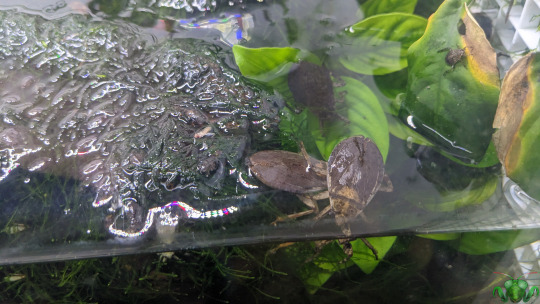

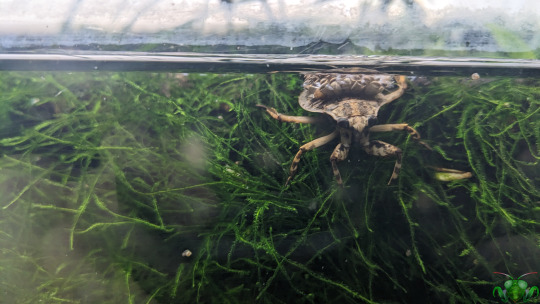

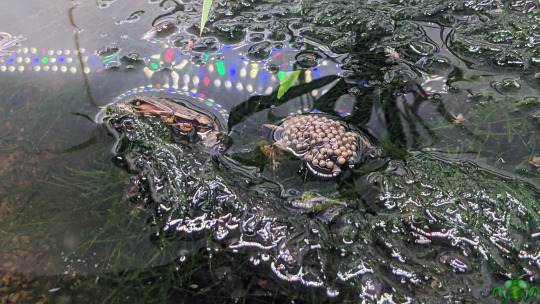



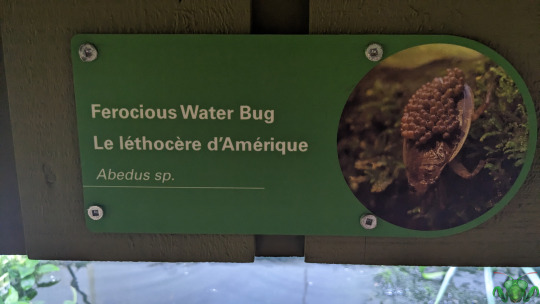
Ferocious Water Bug - Abedus sp.
I was so happy to visit the Toronto Zoo last weekend. It had been a long time since my last visit and it was wonderful to spend the day with some of my dearest friends! In addition to all the delightful outdoor mammalian and avian exhibits, there are plenty of indoor terrarium-based habitats to enjoy and discover exotic and/or strange reptiles, amphibians, and insects (obviously). There are five species in total that I'll be covering over the next few weeks, beginning with a new branch of the Hemipteran order for the blog: Giant Water Bugs (Belostomatidae)! The exhibit here mainly showcases the adults, but there are a few nymphs hiding around. As their common name suggests, these large insects make aquatic environments their primary habitat (freshwater specifically) and are well adapted to it despite ultimately being creatures of the land. They all have a flattened, oval-shaped hydrodynamic body, flattened legs that can can tuck in and row, large eyes to visualize a wide view of their aquatic environment, and enlarged raptorial forelegs to seize prey that swims by. Stay clear of those claws, as anything caught in them gets painfully jabbed by the curved rostrum! Such a puncture has earned them the nicknames: "Toe-Biter", "Fish Killer" and "Alligator Flea". For additional adaptations, like their distant Nepomorpha cousin - the Backswimmer - Giant Water Bugs breathe air, and thusly need to bring it underwater with them since they lack a full set of gills.
To facilitate underwater respiration, these Bugs have a rear abdominal respiratory siphon that they stick out of the water to obtain air while submerged. Yes, a butt-snorkel is the tool for the job. This is why many of the individuals here appear to be tilted as they sit in the water's flora. With larger specimens, it could be mistaken for a stinger, while different species use different types of snorkels to obtain air. From my research, Abedus Water Bugs use two reduced rear-tubes to obtain air and then store it underneath their forewings; they can store quite a bit of a bubble due to their reduced wings beneath, effectively trading their ability to fly for an efficient scuba system. With efficient energy expenditure, they can remain underwater for minutes to hours, and thus have more time for hunting and other activities. Speaking of the latter, you may have noticed a few individuals covered in nodules here. These are male specimens. Females attach their eggs to the backs of males, and the latter will protect them...until they hatch. After they hatch, Abedus nymphs become fair game to hunt, and the nymphs share that behavior, with nymphs further along in development hunting and snatching smaller instars! With the number of eggs here, it looks like the zoo may have a feeding frenzy on its hands! When they aren't eating each other, Giant Water Bugs will eat anything they can hold (even animals much larger than themselves, similar to Jagged Ambush Bugs) including struggling land insects, snails, tadpoles and fish.
Since the insects belong to the Toronto Zoo, I’ve marked them with the Mantis icon. Pictures were taken August 27, 2023 at the Toronto Zoo with a Google Pixel 4. Please go and visit the animals (insects very much included)
#jonny’s insect catalogue#ontario insect#giant water bug#abedus#aquatic bug#aquatic insect#abedus sp#hemiptera#heteroptera#insect#toronto#toronto zoo#august 2023#2023#nature#entomology#invertebrates
7 notes
·
View notes
Text
I think cats should be bipedal with raptorial forelegs. They'd get into so much more mischief.
2 notes
·
View notes
Note
Hey so I'm trying to win a bet so I'm asking your personal opinion.
Which common bug is cooler?
A European mantis or a common eastern firefly?
this is TOUGH...I was like "which of these do I freak out more when I see"...to me, fireflies herald summer, and have a nostalgic vibe. plus their BIOLUMINESCENCE!!
mantises are incredible and curious little aliens. with RAPTORIAL FORELEGS!!
both are incredible miracles of earth & evolution. today, I'll vote firefly, because that's the last one I saw IRL.
feel free to sound off in the replies, folks!!
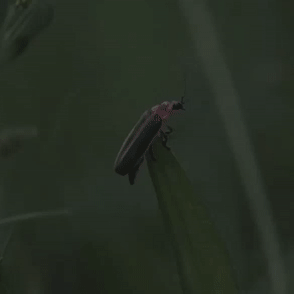
25 notes
·
View notes
Note
MANTISES ARE RELATED TO ROACHES??
yes! while they do have differing ecologies—mantises generally are elongate, diurnal predators and cockroaches generally are flattened, nocturnal detritivores—it’s not so surprising if you take a closer look:
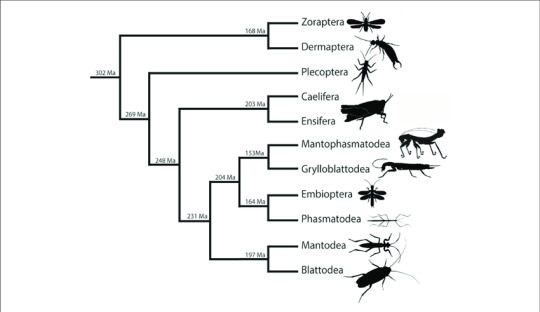
they are one another’s closest relatives, being grouped together in the superorder Dictyoptera, which is revealed by their many shared anatomical features.

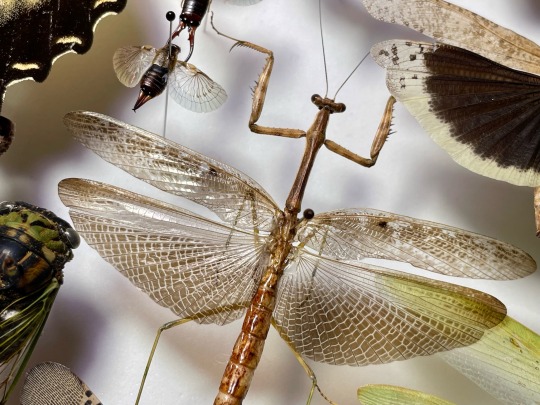
if you compare the wing structure on these two, you’ll find the veins are very similar. to get a mantis out of a roach, morphologically speaking, all you’ve got to do is elongate the pronotum (roach head shield, mantis ‘torso’), elongate the legs, and enlarge the eyes.
mantises and roaches also both produce “oothecae,” tough eggcases in which eggs are protected from the environment. mantis ooths are often made of sturdy, hard foam, while roach ooths are leathery and purse-like.


the raptorial legs of mantises aren’t too greatly modified from a roach forelimb, either. roaches already have spiny legs for digging and defense; with additional spines organized in rows, there’s a powerful grasping foreleg.
additionally, some of the most basal (least changed from the original ancestor) mantises retain a number of very roach-like features, such as flat bodies, a short pronotum, and long cerci (“butt antennae”). Chaeteessa doesn’t even have the long spike at the end of the tibia segment! although I’m not entirely sure if all of these roachy structures are necessary primitive and not secondarily derived, these two do give a good look at how mantises might’ve looked before they evolved the characteristic spindly green forms you recognize today.
2K notes
·
View notes
Text
me and my mantid-like boyfriend (note his raptorial "forelegs" and beak like snout/mandible and bulging eyes. nonetheless he is NOT a species in the order of mantodea and therefore not a true mantis)
4 notes
·
View notes
Text
Priest
My fingers are locked in prayer,
Knees pressed against carpeted floors,
Mouth agape,
Lips moving but devoid of sound.
Beyond me, the swell of moaning and crying and sobbing (and sobbing and sobbing)
To my right, a girl claws at her face, snot dribbling down her chin.
To my left, a boy wails with a head full of thorns, pleading to be let down from his stake.
My back remains rigid, fingers still locked in prayer,
Knuckles flaming a magnificent white against the church pews,
Terror snakes down my spine like white lightning,
And I’m reduced to nothing, music overwhelming.
We lift you up
We moan, jeers and taunts and anthems expand our shared pain,
We are nothing
—and I cannot move
In my slumber I transform, limbs melting into thin sticks,
Eyes glowing golden,
Lips elongating and sclerotizing into a labrum,
Cheeks moulting into gena,
Fingers—tarsi still locked in prayer—
Antennae sprout from my vertex,
Mandibles flit between my teeth,
And my gaze lifts to the heavens, now suddenly much farther away.
Raptorial limbs strip my very being
Beyond my pterothorax
Beyond my clawed tarsi
Heavenly father, do You still love me now?
My forelegs locked in prayer,
I continue praying,
Even as an insect I devote my tears to You,
Figure lost beneath the masses,
As a praying mantis.
#poem#praying mantis#but PRAYING mantis#get it haha tell me im smart#also this is religious trauma#i'm traumatized#but still somehow religious#idk man
1 note
·
View note
Text
Something that’s bothering me right now: there is no video footage Anywhere on the mating ritual between brown wasp mantidflies. Wikipedia describes the whole little thing that the males do, which includes “spreading and raising their wings repeatedly while also extending and stretching their raptorial forelegs” And “The males will repeatedly do this for a few minutes before stopping and continuing if there is no response” this sounds so funny and interesting and there is no way to see it!!
#brown wasp mantidfly#mantidfly#tagging this incase someone happens to have a video/image of this. please#insect
0 notes